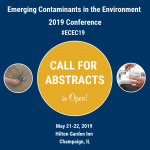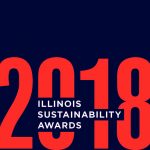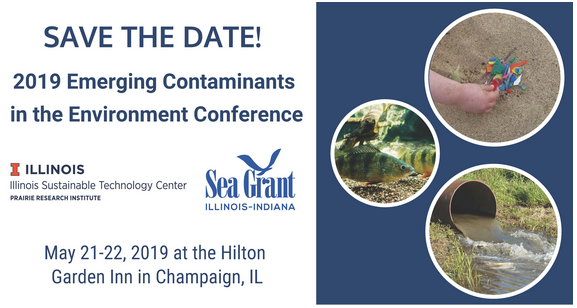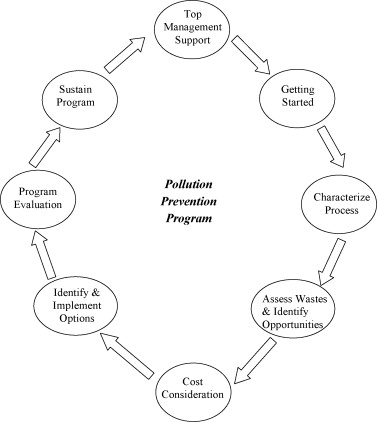Read the full story at FarmWeekNow.com.
Sustainability Award recognizes group’s efforts to increase awareness and use of practices that can help reduce nutrient runoff.
Read the full story at FarmWeekNow.com.
Sustainability Award recognizes group’s efforts to increase awareness and use of practices that can help reduce nutrient runoff.

ISTC is seeking an Assistant Scientist, Coastal Outreach & Engagement to provide technical expertise and leadership to the Illinois Department of Natural Resources Coastal Management Program (CMP) on key areas of work including community capacity building, habitat conservation, education, and recreation/tourism. This position is based in Chicago, Illinois.
To ensure full consideration, applications must be received by November 22, 2018; however, applications will be accepted until the position is filled. Applicants may be interviewed before November 22, 2018; however, no hiring decision will be made until after this date.
For more information or to apply, visit jobs.illinois.edu.
 You can now submit abstracts for the 2019 Emerging Contaminants in the Environment Conference.
You can now submit abstracts for the 2019 Emerging Contaminants in the Environment Conference.
Abstracts are requested for oral and poster presentations on all aspects of emerging contaminants in the environment, including research, public health, policy, management, outreach, and education. The conference will include sessions on:
Visit the conference web site to submit your abstract or use the links below:
Registration will open in February 2019. Registration includes conference admission and detailed conference program. In addition, it includes breakfast and lunch on the day(s) that you register, hors d’oeurves at the poster session (May 21), and a networking mixer at 5-7 pm on May 20 at the Pavilion Lounge in the Hilton Garden Inn.
 Twenty-seven Illinois companies and organizations were honored on October 23 for their significant achievements in protecting the environment, helping sustain the future, and improving the economy. The winners were announced during a ceremony at the Union League Club in Chicago. Read winners summaries in the ceremony program booklet.
Twenty-seven Illinois companies and organizations were honored on October 23 for their significant achievements in protecting the environment, helping sustain the future, and improving the economy. The winners were announced during a ceremony at the Union League Club in Chicago. Read winners summaries in the ceremony program booklet.
“Illinois’ success as an economic and cultural leader depends upon our responsible management of natural resources, as well as sustainable development,” said Kevin OBrien, director of the Illinois Sustainable Technology Center, which administers the awards program. Every year, a group of champions represents the highest models of sustainable commerce, resource use, and governance – the winners of the Illinois Sustainability Awards.
Since 1987, ISTC has presented Sustainability Awards to organizations in Illinois that have demonstrated a commitment to environmental excellence through outstanding and innovative sustainability practices. Any Illinois public or private organization is eligible to apply for the award. Winners are selected through a rigorous process of review and examination by ISTC technical assistance experts.
The 2018 award winners are listed below. Photos of winning teams can be requested from istc-info@illinois.edu.
More information on the Illinois Sustainability Awards program, lists of previous winners, and information on technical assistance services are available from the Illinois Sustainable Technology Center, a division of the Prairie Research Institute at the University of Illinois at Urbana-Champaign.
ISTC’s latest case study features 2017 Illinois Sustainability Award winner Loyola University Chicago. Loyola is an urban Catholic Jesuit university located in near the Chicago lakefront. In 2015, they released a climate action plan which called for them to be carbon neutral by 2025.
Loyola incorporates several tools to ensure that sustainability issues are front and center to their students, staff, and communities. They include:
Loyola’s actions have resulted in a variety of annual reductions and cost savings, including:
ISTC and the Forest Preserve District of Cook County have a history of working together to improve sustainability. Their latest partnership has resulted in the Forest Preserves’ Sustainability & Climate Resiliency Plan, in which they set a goal to reduce its greenhouse gas (GHG) emissions by 80 percent by 2050.
The plan is divided into five priority areas:
Utilities & Emissions
Preserve Operations
Learning & Engagement
Ecological Sustainability
Implementation & Advancement
To learn more about the plan, visit the Forest Preserve District of Cook County or download the publication from IDEALS.
ISTC’s latest case study features 2017 Illinois Sustainability Award winner Aisin Manufacturing Illinois, which is based in Marion. Aisin manufactures a wide variety of products for the automotive industry, including sunroofs, grill door shutters, back door components, center pillar garnishes, roof rails, and door handles. They serve various customers, including Toyota, General Motors, Lexus, and Subaru.
AMI utilizes several tools to continously improve on their sustainability efforts. These include:
As a result of these projects, Aisin:
For more details on Aisin Manufacturing Illinois’ sustainability projects, read the case study.
The 2019 Emerging Contaminants in the Environment Conference (ECEC19) will be held on May 21-22, 2019, at the Hilton Garden Inn in Champaign, IL. The call for abstracts will open in mid-October and registration will open in February.
Check out our website for up-to-date information on the conference: https://www.istc.illinois.edu/events/conferences/ECEC19.

For over 30 years, the Illinois Sustainability Award has recognized private and public Illinois organizations that have demonstrated outstanding and innovative sustainability practices that reduce the use of raw materials; reuse and recycle what was once waste; and prevent toxic materials from entering the environment.
The 2018 Awards Ceremony and Symposium is scheduled for October 23, 2018 at the Union League Club in Chicago. The morning symposium will feature keynote speaker Jacob Madsen, director of sustainability at SC Johnson, as well as panel discussion focused on the water/energy nexus.
For more information about the awards, visit https://go.illinois.edu/sustainability-awards or explore case studies and summaries of previous award winners.

This post originally appeared on the GLRPPR Blog.
Because today is also #ThrowbackThursday, I’m going to highlight some classic P2 publications. Although they were originally in the published in the 1990s through early 2000s, they contain a trove of useful information about implementing pollution prevention in today’s industrial facilities.
Want to learn more? Visit the Pollution Prevention 101 LibGuide for a comprehensive guide to pollution prevention and sustainable business resources.

EPA Sector Notebooks (U.S. EPA, late 1990s)
EPA’s Office of Enforcement and Compliance Assurance (OECA) developed the EPA Sector Notebooks to provide chemical profiles of selected industries. Each profile includes information about the processes conducted in the industry, chemical releases and transfers of chemicals, opportunities for pollution prevention, pertinent federal statutes and regulations, and compliance initiatives associated with the sector. Although these notebooks were published in the late 1990s, they still contain a wealth of information about the production processes, environmental impacts, and pollution prevention options for these sectors.
Facility Pollution Prevention Guide (U.S. EPA, 1992)
For those who are interested in and responsible for pollution prevention in industrial or service facilities. Summarizes the benefits of a company-wide pollution prevention program and suggests ways to incorporate pollution prevention in company policies and practices.
Guide to Industrial Assessments for Pollution Prevention and Energy Efficiency (U.S. EPA, 1990)
Presents an overview of industrial assessments and the general framework for conducting them. It describes combined assessments for pollution prevention and energy and provides guidance for performing them at industrial or other commercial facilities.
The Industrial Green Game: Implications for Environmental Design and Management (National Academies Press, 1997)
This volume examines industrial circulation of materials, energy efficiency strategies, “green” accounting, life-cycle analysis, and other approaches for preventing pollution and improving performance. Corporate leaders report firsthand on “green” efforts at Ciba-Geigy, Volvo, Kennecott, and Norsk Hydro.
Organizational Guide to Pollution Prevention (U.S. EPA, 2001)
This Pollution Prevention (P2) Guide provides information to help organizations get P2 programs started or to re-evaluate existing P2 programs. It presents an alternative method for working on P2 projects and four approaches to implementing a P2 program in an organization.
Pollution Prevention : A Guide to Project and Program Implementation (Illinois Hazardous Waste Research and Information Center, 1993)
This manual serves as an overview for Illinois businesses of all sizes that have chosen to learn more about developing a pollution prevention program.
Searching for the Profit in Pollution Prevention: Case Studies in the Corporate Evaluation of Environmental Opportunities (U.S. EPA, 1998)
This research was initiated to more fully illuminate the challenges facing industry in the adoption of pollution prevention (P2) opportunities, and to identify issue areas that can be studied and addressed by policy-makers and industry. The case studies in this paper describe three P2 projects that were chosen/or analysis precisely because they were in some way unsuccessful. This analysis, based on a small and non-random sampling, is not necessarily representative of the experiences of all companies or all P2 investment possibilities.